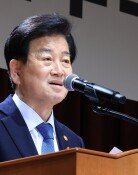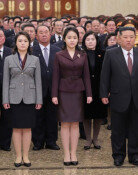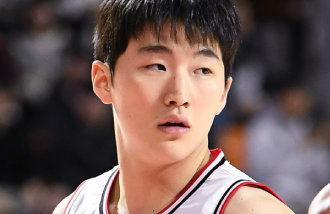[Opinion] The Politics of Gwanghwamun
[Opinion] The Politics of Gwanghwamun
Posted January. 26, 2006 03:03,
The Joseon Dynasty built two palaces in Seoul to prepare for the worst. If there was only one palace, the king would have nowhere to go in the event of a fire or a war. The primary palace was called Bupgung and the secondary palace Yigung.
In the early Joseon era, Bupgung was known as Gyeongbok Palace, and the Yigung was known as Changdeok Palace. When both palaces were destroyed during the Japanese invasion of 1592, King Gwanghae left Gyeongbok Palace and focused only on reconstructing Changdeok Palace. At the same time, he also built two new palaces, Ingyung and Gyeongdeok palaces, near Inwang Mountain. Hence, Changdeok Palaces status rose to that of Bupgungs.
Afterwards, the palaces were swept by various political whirlwinds. King Injo, who grabbed power by dethroning King Gwanghae, tore down Ingyung Palace built by his predecessor and used the construction material to repair Changdeok Palace. In order to raise the prestige of the monarchy, Daewongun reconstructed Gyeongbok Palace and drained the national coffers in the process. It is also said that the Japanese built their government-general building inside Gyeongbok Palace and moved Gwanghwamun to another spot in order to sever the Joseon Dynasty lineage.
The Cultural Properties Administration has announced plans for a Seoul Historic City Project, including the dismantlement and restoration of Gwanghwamun. The project itself is not a novelty since there have been various plans to move Gwanghwamun to its original location or restoring the outer walls of Seoul in the past. Opening up Sookjungmun as part of the plan to open Bukak Mountain to the public was also announced last September. Creating a plaza in front of Gwanghwamun is something new, but so far, there have been no detailed consultations between the Cultural Properties Administration and the city of Seoul. In addition, the administrations answer, The exact amount has not yet been determined, on the question of budget was just too careless.
Announcing a project to the public that is not yet concrete has sparked rumors that this project is a political one aimed at matching the Cheonggye Stream restoration project that was successfully completed by the opposition party Seoul mayor. The first stage of the opening of the Bukak Mountain is scheduled for April, a month before the May regional elections; the mountain will be completely open by next October, just before the presidential elections. This is all just too much of a coincidence. No one will blame anyone for restoring Seouls historical sites. But manipulating restoration work timetables to fit the election schedule might endanger a longstanding political trend. Gyeongbok Palace, which has not played host to politics for years, should not be used for this governments needs.
Editorial Writer Hong Chan-sik, chansik@donga.com




![[속보]14명 사상 종각역 가해 운전자 약물 양성반응…경찰 긴급체포](https://dimg.donga.com/c/138/175/90/1/wps/NEWS/IMAGE/2026/01/02/133084436.4.jpg)
![“나 도시락이야”…경찰도 못 연 문이 열렸다 [따만사]](https://dimg.donga.com/c/138/175/90/1/wps/NEWS/IMAGE/2026/01/01/133077778.1.jpg)

